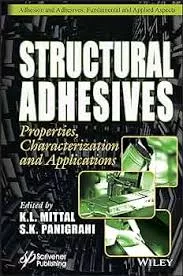Ask Dr. Dave
Is handling one-component polyurethane adhesives and silicone sealants difficult?
Dave Dunn's October 2017 column
Question: We currently buy one-component polyurethane adhesives and silicone sealants. We are considering manufacturing them, but are apprehensive about handling the moisture-sensitive raw materials. Is this difficult?
Answer: It sounds like you sell to several different markets. Although there is some overlap of silicone or polyurethane markets, they are often used in distinct applications. For example, silicone sealants are used in demanding sealing environments, whereas polyurethane adhesives are often used in large-area bonding situations. Silicones can be difficult to manufacture because of their very high viscosities, often in the millions of centipoise.
In addition to moisture control, powerful mixing equipment is required. High levels of fumed silica fillers are used, which are often added via a vacuum system. In contrast, polyurethanes are low- to medium-viscosity systems that can be made with relatively simple equipment. Many companies mix them in 55-gal drums or tote containers. Failure to exclude moisture can lead to premature curing, reduced shelf life and the generation of foaming in the adhesive. However, moisture content can usually be controlled by the addition of moisture scavengers.
When you are packaging the products, complete sealing to prevent ingress of moisture is essential. Polyurethane raw material suppliers can provide excellent technical support. I recommend that you look at manufacturing polyurethanes first, and then perhaps use the profits to purchase silicone mixing equipment.
You might also consider looking at the so-called modified- silane polyether sealant technology as an alternative to both polyurethanes and silicones. These materials have a urethane-like backbone but cure via a silicone-type crosslinking reaction. Although still sensitive to moisture, they are easier to handle
and package. ASI
Looking for a reprint of this article?
From high-res PDFs to custom plaques, order your copy today!





